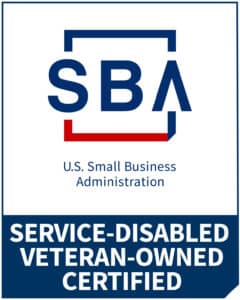
Federal procurement is undergoing a quiet revolution—driven by policy shifts, modernization efforts, and a growing appetite for innovation. From sweeping changes to the Federal Acquisition Regulation (FAR) to the rise of alternative contracting methods, the government is steadily reshaping how it buys what it needs—faster, smarter, and more flexibly.
GSA’s Expanding Role and the Push for FAR Reform
One of the most significant developments is the General Services Administration (GSA) taking a more centralized role in managing major contract vehicles. This shift reflects a broader goal: to consolidate federal buying power, improve consistency across agencies, and modernize how we procure critical services and technologies. Just recently, on May 28th, GSA hosted a webinar that drew over 7,000 attendees—clear evidence of widespread interest in what’s coming.
At the same time, policymakers are turning their attention to the FAR itself. The Trump Administration has signaled a strong interest in simplifying and updating this cornerstone of government contracting. The intent is clear: give contracting officers more discretion, reduce outdated or duplicative requirements, and make it easier to buy cutting-edge solutions.
What This Means:
A Growing Toolkit for Innovation: CSOs and OTAs
As traditional contracting mechanisms evolve, agencies are also adopting faster, more flexible options for acquiring new technologies.
Commercial Solutions Openings (CSOs): Letting Innovation Lead
CSOs allow agencies to ask for solutions without dictating how the work should be done. Instead of specifying a rigid scope, the government defines the problem and invites industry to pitch creative approaches—especially from nontraditional vendors.
Why CSOs Are Gaining Ground:
In short, CSOs create a fast track for adopting innovation without getting mired in red tape.
Other Transaction Agreements (OTAs): Flexibility Without the FAR
While not new, OTAs are seeing expanded use across agencies like the Department of Defense and the Department of Homeland Security. These agreements let agencies bypass many FAR requirements to work directly with commercial vendors, especially for research and development.
The OTA Advantage:
However, with greater flexibility comes greater responsibility. OTAs can expose agencies to legal risks if not carefully managed, and the lack of standard structure demands a higher level of diligence.
Balancing Agility with Accountability
While these modern methods offer speed and creativity, they also reduce some of the built-in safeguards found in FAR-based contracts. For both agencies and contractors, the challenge is finding a balance between agility and accountability.
Key Trade-Offs to Watch:
Getting this balance right is especially important for high-visibility or mission-critical buys.
What Contractors Need to Know
For companies looking to break into the federal market—or expand their footprint—these changes represent a huge opportunity. But it also requires a different mindset and preparation.
Tips for Navigating the New Landscape:
As the federal government accelerates its procurement pace, the most successful contractors will be those who understand these evolving tools—and are ready to respond with agility, innovation, and insight. At Ghostwerks, we’re keeping a close eye on these shifts to help our clients navigate the future of acquisition with confidence.

©2025 Ghostwerks. All rights reserved. Privacy Policy. Terms of Use.